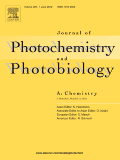
JOURNAL OF PHOTOCHEMISTRY AND PHOTOBIOLOGY A-CHEMISTRY
Scope & Guideline
Exploring the Dynamics of Light-Driven Reactions
Introduction
Aims and Scopes
- Photocatalytic Processes and Materials:
The journal extensively covers the development and application of photocatalytic materials and processes, focusing on their efficiency in degrading pollutants, generating hydrogen, and other environmental applications. - Fluorescent Probes and Sensors:
Research involving the design and application of fluorescent probes for detecting various ions and molecules is a core aspect, emphasizing their use in biological imaging and environmental monitoring. - Photophysical and Photochemical Studies:
The journal publishes studies that delve into the photophysical and photochemical properties of materials and compounds, facilitating a deeper understanding of light-matter interactions. - Dye-Sensitized Solar Cells (DSSCs):
The journal features research on novel dyes and their applications in solar cells, particularly focusing on improving efficiency through various strategies including co-sensitization and new material development. - Biological Applications of Photochemistry:
There is a significant interest in the application of photochemistry in biological systems, including studies on photodynamic therapy, the impact of light on biological molecules, and the development of light-activated drugs.
Trending and Emerging
- Nanomaterials in Photocatalysis:
There is a growing trend in utilizing nanomaterials for photocatalytic applications, with a focus on enhancing efficiency and stability, as well as exploring novel synthesis methods. - Sustainable and Green Chemistry:
Research emphasizing sustainable practices in photochemistry, including the use of renewable resources and eco-friendly processes, is gaining traction, aligning with global sustainability goals. - Advanced Fluorescent Probes for Biological Applications:
The development of sophisticated fluorescent probes for biological imaging and sensing is on the rise, showcasing innovative designs that enable real-time monitoring of cellular processes. - Multi-Functional Photocatalysts:
Emerging research is focusing on multifunctional photocatalysts that can serve dual roles, such as pollutant degradation and energy conversion, highlighting a trend towards integrated solutions. - Photodynamic Therapy Innovations:
Innovations in photodynamic therapy, particularly involving new photosensitizers and delivery mechanisms, are increasingly featured, reflecting the growing importance of photochemistry in medical applications.
Declining or Waning
- Traditional Organic Photochemistry:
There has been a noticeable decrease in the publication of papers focusing solely on traditional organic photochemistry, as the field has increasingly integrated with materials science and nanotechnology. - Low-Efficiency Photocatalysts:
Research on low-efficiency photocatalysts is becoming less prominent, with a shift towards the development of highly efficient, multifunctional materials that can operate under visible light. - Historical Photochemical Methods:
Papers discussing classical photochemical methods, such as those rooted in early 20th-century techniques, are less common, as the focus has shifted towards novel methodologies and applications.
Similar Journals
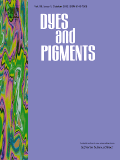
DYES AND PIGMENTS
Fostering Innovation in Dyes and Pigments for Diverse Applications.Dyes and Pigments, published by Elsevier Science Ltd, stands as a pivotal journal in the field of chemical engineering, particularly focusing on the realms of dyes and pigments as materials with extensive application across industries. Since its inception in 1980, this journal has evolved to capture cutting-edge research until 2024, making significant contributions to both the Chemical Engineering and Process Chemistry and Technology domains, where it currently ranks in the Q2 category. With an impressive Scopus ranking placing it among the top 82nd percentile in General Chemical Engineering and the top 73rd percentile in Process Chemistry and Technology, it demonstrates a robust commitment to publishing high-quality, impactful research. Although it does not offer an open-access option, its comprehensive content remains accessible to a wide audience of researchers, professionals, and students who are deeply engaged in the study and development of new dye and pigment technologies. Engaging with this journal not only enriches knowledge but also facilitates critical discussions that drive future innovations in chemical material sciences.

Asian Journal of Organic Chemistry
Exploring the depths of organic chemistry excellence.Asian Journal of Organic Chemistry, published by WILEY-V C H VERLAG GMBH, stands as a pivotal platform in the realm of organic chemistry, catering to researchers and professionals eager to share their contributions to the field. With an ISSN of 2193-5807 and E-ISSN of 2193-5815, this journal spans a commendable convergence from 2012 to 2024, featuring a notable impact factor highlighted by its Q2 ranking in the 2023 Organic Chemistry category. Positioned at rank #94 out of 211 in Scopus, the journal emphasizes the importance of quality research and innovation in organic chemistry. The lack of open access enhances the journal's selectivity, ensuring only the most rigorous and impactful studies are published. Serving as a vital resource for scholars, students, and practitioners alike, the Asian Journal of Organic Chemistry fosters the dissemination of knowledge, advances academic dialogue, and reinforces the pivotal role of organic chemistry in scientific advancement.

Journal of Nanostructures
Pioneering Research in Biomaterials and BeyondJournal of Nanostructures, published by UNIV KASHAN PRESS, is an esteemed open-access journal that has been actively disseminating groundbreaking research since 2011. With an ISSN of 2251-7871 and an E-ISSN of 2251-788X, this journal has established itself as a significant platform for the exploration of nanostructured materials across various disciplines, including biomaterials, electronic, optical, and magnetic materials. As a testament to its scholarly impact, the journal has achieved notable rankings in its respective categories, including Q3 status in prominent areas such as Mechanics of Materials and Polymers and Plastics. This makes the Journal of Nanostructures a vital resource for researchers and professionals seeking to advance their understanding and innovation in nanotechnology. Furthermore, the journal's commitment to open accessibility ensures that valuable knowledge reaches a diverse audience, facilitating collaboration and growth in this dynamic field. For researchers eager to contribute, the journal offers a platform to publish impactful findings that can influence both academia and industry.
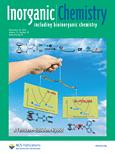
INORGANIC CHEMISTRY
Advancing the Frontiers of Inorganic ChemistryInorganic Chemistry, published by the American Chemical Society, stands at the forefront of the field of inorganic and physical chemistry, boasting an impressive impact in the academic community with a 2023 classification in the Q1 quartile across multiple categories including Inorganic Chemistry and Miscellaneous Chemistry. Since its inception in 1962, this esteemed journal has been a crucial platform for disseminating groundbreaking research, innovative methodologies, and comprehensive reviews integral to understanding the complex behaviors of inorganic materials. With a ranking of #12 out of 79 in Inorganic Chemistry and #37 out of 189 in Physical and Theoretical Chemistry according to Scopus metrics, Inorganic Chemistry has established itself as a premier destination for researchers, professionals, and students alike, eager to stay abreast of pivotal developments and trends in the discipline. Despite being a subscription-based journal, its esteemed reputation and critical contributions make it essential for anyone engaged in the exploration of inorganic chemical phenomena. As it prepares to converge into a new era by 2024, the journal continues to embody excellence and innovation, fostering a dynamic exchange of ideas essential for advancing this vibrant area of science.
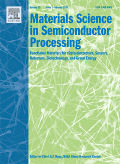
MATERIALS SCIENCE IN SEMICONDUCTOR PROCESSING
Pioneering Research for Tomorrow's ElectronicsMATERIALS SCIENCE IN SEMICONDUCTOR PROCESSING, published by ELSEVIER SCI LTD, is a premier journal dedicated to advancing knowledge in the field of semiconductor processing, an area pivotal to the development of modern electronic applications. With an ISSN of 1369-8001 and an E-ISSN of 1873-4081, this journal exemplifies excellence with a remarkable standing in various disciplines, as indicated by its 2023 Scopus rankings—occupying the top quartile (Q1) in Condensed Matter Physics and Mechanical Engineering, and Q2 in Materials Science and Mechanics of Materials. The journal not only provides a platform for high-impact original research, reviews, and significant findings but also bridges theoretical and practical implications within the field. Operating under a publication timeline that extends from 1998 to 2025, it remains an essential resource for researchers, professionals, and students seeking to deepen their understanding of semiconductor materials and processes. Although not an open-access journal, it offers robust options for access, ensuring that cutting-edge developments are made available to the scholarly community.

Chemical Physics Impact
Connecting Minds, Transforming Chemical Physics.Chemical Physics Impact is a prominent open-access journal published by ELSEVIER, dedicated to advancing the field of chemical physics and its related disciplines. With an ISSN of 2667-0224, this journal has rapidly carved a niche since its inception in 2020, amassing a commendable reputation reflected in its diverse category quartile rankings for 2023, including Q2 in Atomic and Molecular Physics, Condensed Matter Physics, and Electronic, Optical and Magnetic Materials. Situated in the heart of the Netherlands, the journal serves as a global platform for researchers, professionals, and students to disseminate groundbreaking findings and explore interdisciplinary approaches within scientific inquiry. The accessibility of publications underlines the journal’s commitment to fostering knowledge exchange across borders. By providing a space for high-quality research contributions, Chemical Physics Impact plays a vital role in shaping the future of chemical physics and related fields through impactful research and collaborative dialogue.
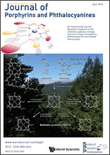
JOURNAL OF PORPHYRINS AND PHTHALOCYANINES
Pioneering Discoveries in Versatile Molecular StructuresJOURNAL OF PORPHYRINS AND PHTHALOCYANINES, published by WORLD SCIENTIFIC PUBL CO PTE LTD, is an influential peer-reviewed journal dedicated to advancing the field of porphyrins and phthalocyanines, key compounds in both chemistry and materials science. With an ISSN of 1088-4246 and an E-ISSN of 1099-1409, this journal has been a vital resource since its inception in 1997 and is expected to continue until 2024. The journal holds a respectable position in the academic landscape, categorized in the Q3 quartile for miscellaneous Chemistry journals and ranked #252 out of 408 in the general chemistry category according to Scopus, reflecting a growing impact in the field despite its current percentile standing at 38th. JOURNAL OF PORPHYRINS AND PHTHALOCYANINES seeks to publish original research articles, reviews, and critical studies that explore the synthesis, characterization, and applications of these versatile compounds, which play essential roles in numerous scientific disciplines, from catalysis to materials development. This journal is an indispensable platform for researchers and professionals seeking to disseminate their findings, engage with contemporary discussions, and stay informed about cutting-edge advancements in porphyrin and phthalocyanine research.

Surfaces is an esteemed academic journal published by MDPI in Switzerland, operating as an open access platform since 2018. With an E-ISSN of 2571-9637, this journal focuses on the interdisciplinary advancements in the fields of chemistry, materials science, and physics, particularly in the domain of surfaces and interfaces. As a testament to its scholarly impact, Surfaces is ranked in the second quartile for multiple categories as of 2023, including Chemistry (miscellaneous), Materials Science (miscellaneous), Surfaces and Interfaces, as well as Surfaces, Coatings and Films, showcasing its relevance within these disciplines. Researchers and professionals seeking to disseminate and acquire knowledge on the latest innovations can benefit from the journal's rigorous peer-review process and commitment to quality, ensuring visibility and accessibility for current developments in surface technology and material interactions. With a growing archive from 2019 to 2024, Surfaces stands out as a vital resource for the academic community.
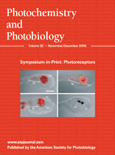
PHOTOCHEMISTRY AND PHOTOBIOLOGY
Transforming our understanding of light's impact on biology.Photochemistry and Photobiology is a premier journal published by Wiley, dedicated to advancing the field of photochemistry and its applications in biology. With a long-standing history since its inception in 1962, this journal is recognized for its significant contribution to the understanding of light-driven processes, encompassing areas such as biochemistry, medicine, and theoretical chemistry. As evidenced by its impressive Q2 rankings in several categories, including Biochemistry and Physical and Theoretical Chemistry, Photochemistry and Photobiology is an influential resource for researchers and professionals worldwide. The journal's commitment to high-quality research is reflected in its solid standing within important Scopus ranks, marking it as a vital outlet for innovative studies that elucidate the roles of photochemical reactions in biological systems. While it operates on a traditional model rather than Open Access, the journal remains a crucial platform for exchanging knowledge and fostering collaborations across these interconnected disciplines. Explore the latest findings and contribute to the growing body of knowledge in this dynamic field.

JOURNAL OF PHOTOCHEMISTRY AND PHOTOBIOLOGY B-BIOLOGY
Illuminating the Intersection of Light and LifeJOURNAL OF PHOTOCHEMISTRY AND PHOTOBIOLOGY B-BIOLOGY is a prestigious academic journal published by Elsevier Science SA in the Netherlands, focusing on the interdisciplinary domains of photochemistry and photobiology. With a notable impact factor and distinguished recognition across multiple disciplines, including Q1 rankings in Biophysics, Radiation, and Radiological and Ultrasound Technology, this journal is at the forefront of research dissemination in its field. The publication spans over three decades, from 1987 to 2024, reflecting its long-standing commitment to advancing knowledge in areas critical to both fundamental and applied science. Researchers and professionals are encouraged to submit original research articles, reviews, and short communications that explore the interactions between light and biological systems, with the aim of fostering innovative solutions impacting health and technology. Although it operates on a subscription model, this journal remains a vital resource for all those engaged in the scientific exploration of these dynamic fields.